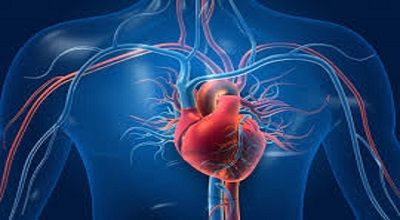Cardiovascular System
The cardiovascular system is also known as the circulatory system. A complex network of organs and vessels is responsible for transporting blood, nutrients, oxygen, and hormones throughout the body. It plays a crucial role in maintaining homeostasis and supporting the functions of various organs and tissues. The key components of the cardiovascular system include the heart, blood vessels, and blood.
Heart:
- The heart is a muscular organ that acts as a pump, driving blood throughout the body.
- It is divided into four chambers: two atria (upper chambers) and two ventricles (lower chambers).
- The right side of the heart receives deoxygenated blood from the body and pumps it to the lungs for oxygenation.
- The left side of the heart receives oxygenated blood from the lungs and pumps it to the rest of the body.
Blood Vessels:
- Arteries: Carry oxygenated blood away from the heart to the body’s tissues. The largest artery is the aorta.
- Veins: Carry deoxygenated blood back to the heart. The largest vein is the superior and inferior vena cava.
- Capillaries: microscopic blood vessels that connect arteries and veins, facilitating the exchange of oxygen, nutrients, and waste products between the blood and tissues.
Blood:
- Blood is a connective tissue that consists of plasma, red blood cells, white blood cells, and platelets.
- Plasma is the liquid component of blood and carries nutrients, hormones, and waste products.
- Red blood cells (erythrocytes) transport oxygen from the lungs to the tissues and carbon dioxide from the tissues to the lungs.
- White blood cells (leukocytes) are involved in the immune response and defense against infections.
- Platelets are involved in blood clotting, preventing excessive bleeding.
The cardiovascular system performs several vital functions, including:
- Transportation: The system transports oxygen, nutrients, hormones, and waste products to and from cells.
- Regulation: It helps regulate body temperature, pH, and water balance.
- Protection: White blood cells and antibodies in the blood defend against infections, and blood clotting prevents excessive bleeding.
Final Words
Disorders of the cardiovascular system, such as heart disease. Hypertension and atherosclerosis can have serious health implications. Maintaining a healthy lifestyle, including regular exercise, a balanced diet, and avoiding smoking, can contribute to cardiovascular health. Regular medical check-ups are also essential for early detection. And management of cardiovascular conditions.
